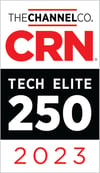Meeting data storage capacity needs is only half the battle when working with data-intensive applications and workloads. Data management is necessary before companies can access the information needed for advanced analytics. Managing data is also the key to cost-efficient data storage.
When companies store data using the wrong type of media, they waste a lot of money. For example, high-performing flash storage is no place for archiving information. Some organizations also suffer from data silos that prevent them from gaining the visibility into data needed for decision making.
According to Transparency Market Research, changing data management needs are behind the steady growth of software-defined storage (SDS). SDS enables organizations to optimize data management through automation, eliminating the need for mastering each storage vendor’s management tools and manually managing data.
What Is Software-Defined Storage?
Software-defined storage gives you the flexibility to upgrade or downgrade in a way you have never been able to before, giving you power you have never had before. SDS gives you hardware independence.
However, SDS does not separate the storage itself from the hardware. SDS is merely a layer of your total technology stack that provides a substantial number of services using off-the-shelf servers instead of proprietary hardware. SDS abstracts what controls storage requests, not what’s actually stored. It’s a software layer between the physical storage and the data request, allowing you to manipulate how and where data is stored. SDS controller software provides storage access services, networking, and connectivity, and makes no assumptions about the underlying hardware, including its capacity or capability.
This virtualization allows policy-based provisioning and management of information to take place independently of the hardware that underlies it. The software layer between physical storage and the data command and control plane empowers your company to decide where and how to store data so you can automate routine data management. Because of the separation between hardware and control plane, companies can use less expensive commodity hardware without sacrificing quality and functionality.
Built-In Data Management
SDS helps companies better manage data through built-in tools. The technology allows for data tiering and pooling for data management flexibility. With SDS, you gain the ultimate freedom in flexibility and hardware independence, allowing you to choose whatever storage infrastructure you like. It enables worry-free and disaster-free migration capabilities and empowers you to optimize your free/unused capacity intelligently.
Data pooling eliminates silos. Storage goes into a shared pool that can be used to store data needed for applications and services, optimizing use of available capacity. Structured and unstructured data can be combined so decisions can be made based on a complete view of data.
SDS also enables data to be sent to the appropriate storage media based on frequency of use. For example, frequently accessed data goes to flash storage. Data that needs to be archived for compliance purposes is moved to lower-performing storage, such as disk, or sent to the public cloud.
Unified Management
SDS provides a single pane of glass that gives visibility into the entire storage infrastructure for ease of management. The data from every source is presented through a unified user interface.
With SDS, all the available storage is managed and used as if it were located in a single array. All storage can be managed regardless of the vendor or manufacturer. When data management is unified, companies obtain a full and accurate picture of data across the organization, making the information actionable.
SDS and Beyond
SDS can be the start of a complete data center transformation. You can think of SDS as a cog in the larger hyperconverged infrastructure or software-anything ecosystem. Once your company has revitalized your approach to data storage and management, you can adopt other software-defined technologies, such as software-defined networking (SDN), software-defined security (SDSec), and the total package, software-defined data center (SDDC).
ProActive Solutions offers SDS as part of our Data Center Transformation IT solutions. We are a Dell EMC Platinum Partner, providing leading SDS and SDDC solutions for a completely new approach to data center.
At ProActive, we take a consultative approach to working with our customers. Our team will work closely with yours to decide if SDS or other software-defined solutions align with your business goals and develop a custom plan for data center transformation.
Find out more about SDS and other software-defined solutions. Get a copy of ProActive’s eBook The Complete Guide to Software-Defined Everything.



